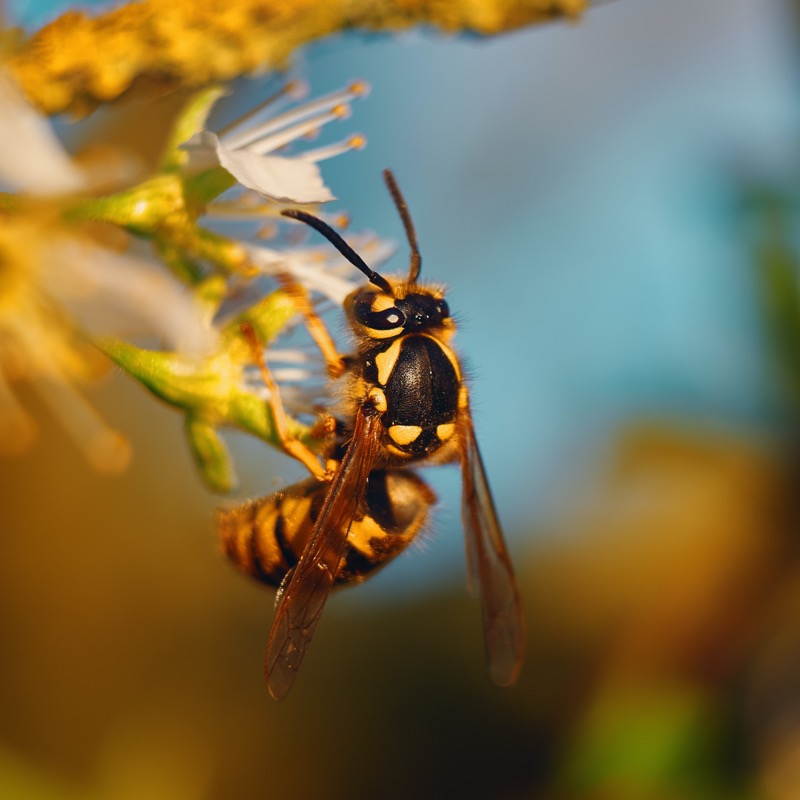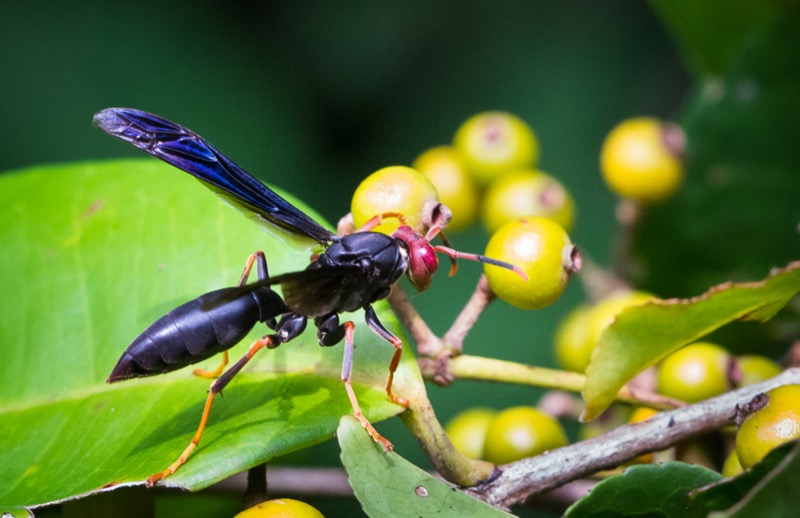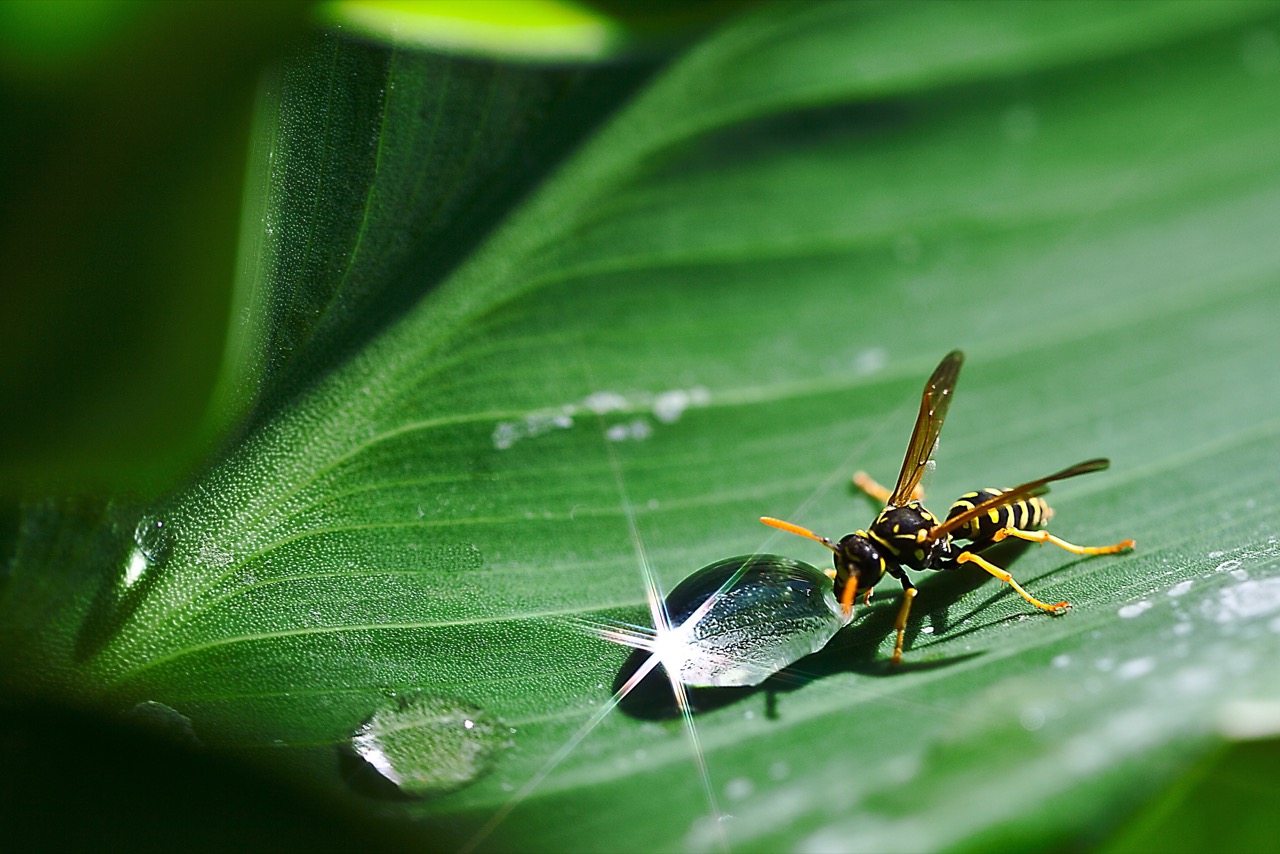What’s The Difference Between Yellow Jackets and wasps?
All yellowjackets are wasps, plain and simple, but the insinuation of this question is that there’s a difference. All wasps are not yellowjackets; there are hundreds of thousands of species of wasps, and the yellowjacket—usually Vespula germanica—is only one of them.
Wasps are classified in two categories: solitary and social. As amusing as the differentiation might sound, the difference is important. Social wasp colonies start from scratch each year, with a fertilized queen creating a colony of about 5000 members. These colonies die in the fall, and only the queen survives to create a new colony the next year. All wasps have stingers, but social wasps use their stingers only in self-defense. Yellowjackets and hornets belong to this group.

Solitary wasps, the largest subgroup of wasp, are not raised in colonies. Each female wasp lives independently, and these wasps use their venom to hunt. They are not aggressive towards humans and will rarely sting (if they do, it is likely because they are being provoked.) These wasps come in all sizes, ranging from nearly invisible to several centimeters long.
Because social wasps are omnivores, they are frequently attracted to humans and the tasty food we eat, especially those containing sugar. They are identifiable usually by striping, which is meant to serve as a warning. They are decidedly aggressive and will sting if they feel they need to protect themselves or their colony. Too often, people can get stung as a result of trying to swat the wasp away from their face.

A positive side of wasps is that they are predatory. This means they can be very effective pest control toward difficult garden pests like hornworms. Adult wasps only eat sugar, but will still hunt prey so that they can feed their babies. Unfortunately, if social wasps aren’t native to an area, they can destroy the native insect population. This is why control of social wasps is important. If allowed to overrun a new ecosystem, they can do endless amounts of damage.
Since adult wasps eat sugars, they feed on nectar from flowers. They also eat a sugary ooze left by aphids when they are busy eating plant sap. As a result, wasps can be an important part of the pollination process. They aren’t specifically classified as pollinators because they don’t have much on their body to carry pollen from one plant to another, but it can still happen as part of their feeding process. However, just like with predation, this trait can have downfalls as well. If wasps exist in new environments, they can carry diseases to other insects.
Killing yellowjackets and other social wasps can be a tricky process. The first step is to eliminate any food sources they might have, if possible. If wasps can’t find food, they’ll go somewhere else to look for it. By sealing up trash and other potential sugar sources, food for wasps can be reduced. Fruit trees are large attractants for wasps because of the easily available food. Sealing up nooks and crannies in buildings can prevent wasps from building nests inside walls. Preventing other insects, such as flies and ants, can eliminate a food source for wasps as well.
Once all steps have been taken to encourage wasps, an exterminator should be called to handle the nests. Because of their aggressiveness, it is not recommended that a person take care of a wasp’s nest on their own.








